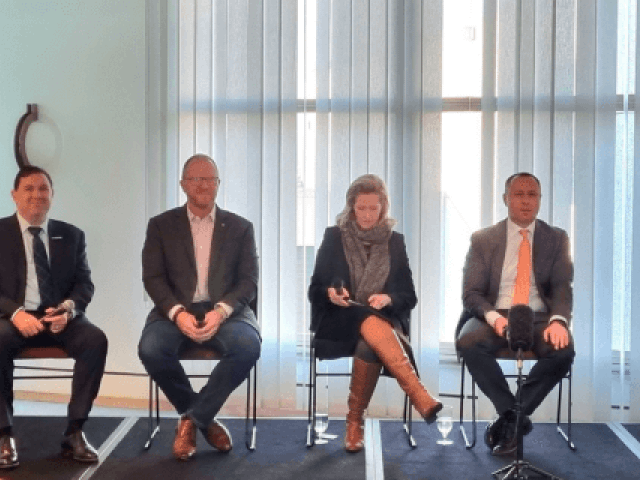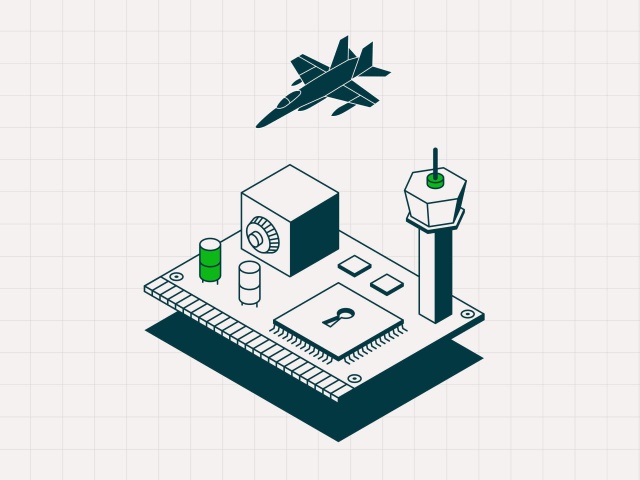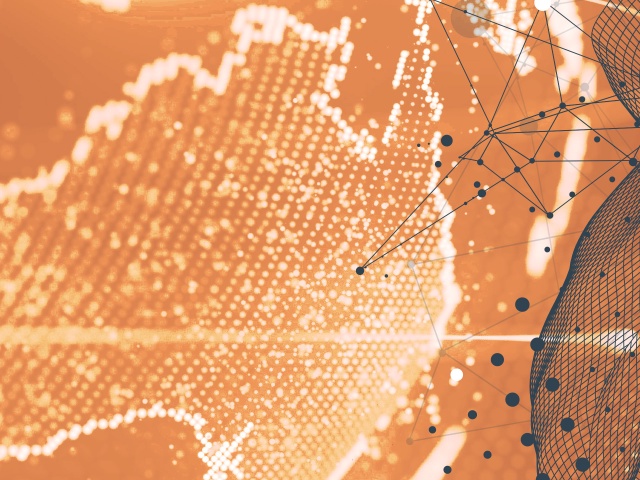The thing I love most about my job is the people I get to meet.
Last week I had the pleasure of sharing a panel with Ukraine’s Ambassador to Australia, Vasyl Myroshnychenko.
Since Russia’s brutal invasion of Ukraine in February 2022, Vasyl has emerged as one of the most passionate advocates for his country, forcefully arguing the case for more materiel support and never letting the cause of Ukraine’s freedom slip from the public mind.
The panel discussion was at Parliament House in Canberra, Australia.
Canberra is a long way from Ukraine but the reverberations from that terrible conflict are being felt worldwide.
While most of the focus has been on the response of the Atlantic countries, the course of the war is being carefully studied by countries across the Asia Pacific, particularly Australia.
Asia is the most dynamic region on the planet but it is also one of the most unstable.
Countries like Australia and Japan know full well that the great power competition roiling the Asia Pacific might at any moment boil over into a full-blown crisis, potentially plunging the entire region into a Ukraine-style conflict.
The topic of the panel was hybrid warfare in the 21st century – that is, how do countries fight a cyber conflict while also waging a kinetic one?
Russia has one of the most formidable offensive cyber capabilities in the world, and yet by most accounts the cyber campaign waged against Ukraine was underwhelming.
That led some commentators to conclude the cyber threat has been hyped. Vasyl had a different take.
He said ever since Russia’s 2014 annexation of Crimea Ukraine has been preparing itself for a fight with Moscow.
Mindful of Russia’s cyber capabilities Ukraine has been girding its network, including those that run its critical infrastructure.
Interestingly, this is not a phenomenon restricted to Ukraine. Estonia, a country of just 1.3 million people, has some of the toughest cyber defences in the world, largely thanks to its proximity to Russia.
Like Ukraine, Estonia has come under sustained cyber assaults from Moscow.
In the early 2000s Estonia was hammered by Russian cyber attacks. It hardened its networks and now ranks as one of the best-defended cyber economies in the world.
This is particularly impressive when you consider how deeply embedded in the digital ecosystem Estonians are.
Estonia is one of the most digitally integrated economies in the world, meaning the cyber attack surface is vast.
Of course, Ukraine has also been assisted by Russia’s poor planning. The same judgement errors that have blighted Moscow’s military campaign have also hindered its cyber effort.
Russia’s cyber attackers had little time to prepare for a war and when it did occur they erroneously assumed it would be over quickly.
Another factor working in Ukraine’s favour has been the vast coalescence of public and private support it has received.
The US government has provided HIMARS, the Australian Bushmasters, and the Poles Leopard tanks.
Less remarked upon has been the massive level of support offered by the private sector, particularly in the early phases of the conflict.
In the wake of Russia’s invasion, Microsoft hastily relocated Ukraine’s data holdings to data centres across Europe.
The fact that one of the first things Ukraine sought to do was to protect its data in itself tells you all you need to know about how data has become a vital strategic asset essential to the functioning of a society and its economy.
After Ukraine’s satellite infrastructure was knocked out by Russian cyber attackers, SpaceX replaced it with its StarLink service, effectively providing an immediate redundancy.
One of the panelists, the Australian Strategic Policy Institute’s (ASPI) Bec Shrimpton, said this level of private sector support in the wake of a conflict was virtually without precedent.
It’s an astute point.
The problem is, how do you guarantee it?
The private sector support offered to Ukraine was effective because, unlike government, corporations can move quickly.
But it was entirely voluntary.
One way government can ensure the private sector pitches in during times of crisis is to ensure it’s there in the first place.
Australia has a large – and growing – community of SMEs in the tech, data and national security space.
But unlike America or the big European players, it has no native defence primes.
On the face of it, this is a problem for a country in the midst of a huge strategic uplift, like Australia.
I take a different view.
I think Australia’s vast network of SMEs is an untapped superpower.
Defence and tech innovation is at its most dynamic in small enterprises, such as start-ups.
As Australia, the UK and America seek to develop pillar two of AUKUS, which is focused on the transfer of high tech capabilities like quantum, AI and hypersonics, they need to pay close attention to what’s going on at the ground.
The next big thing might well come from a large US prime like Lockheed or Boeing. But it might also come from three guys in a garage with nothing more than a good idea and a little bit of seed capital.
As I said to the panel in Canberra, if it’s to thrive Australia’s national security industry needs to learn the lessons of Silicon Valley: just turn up and do it.






